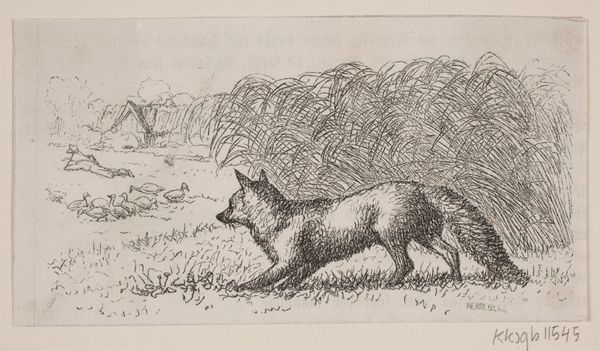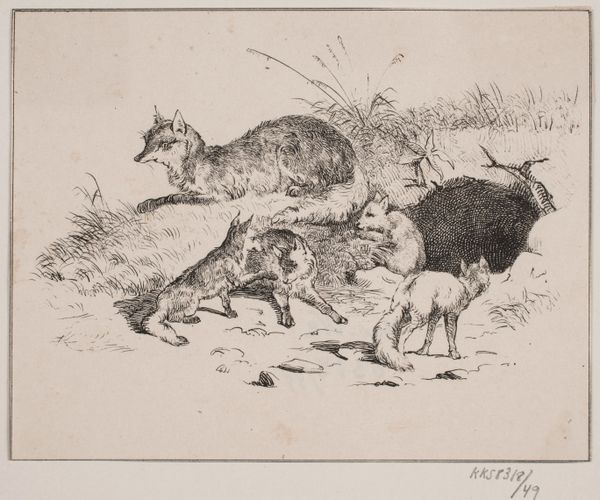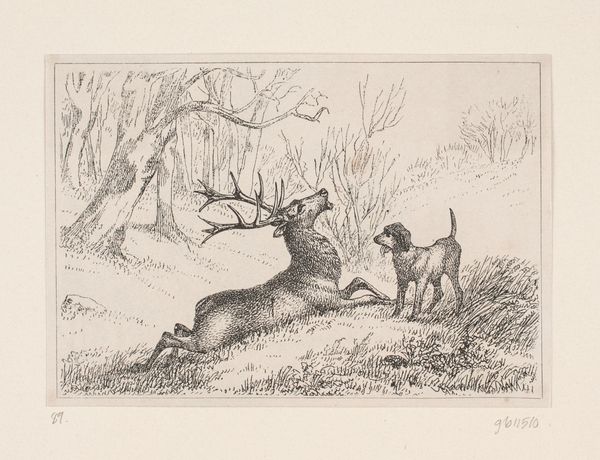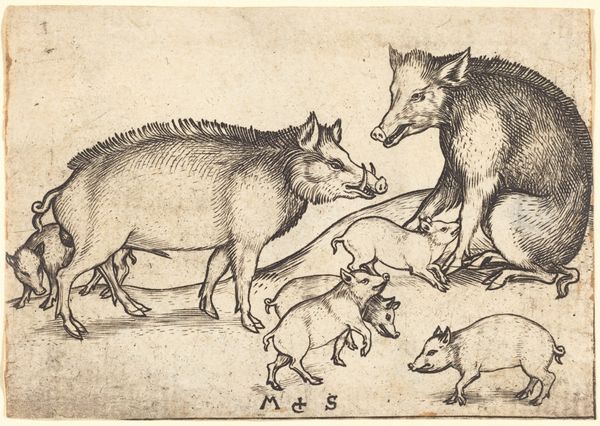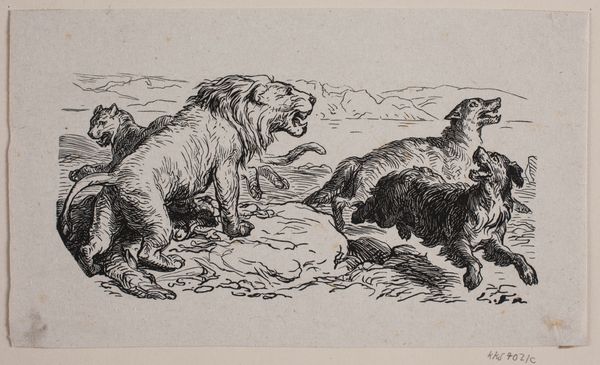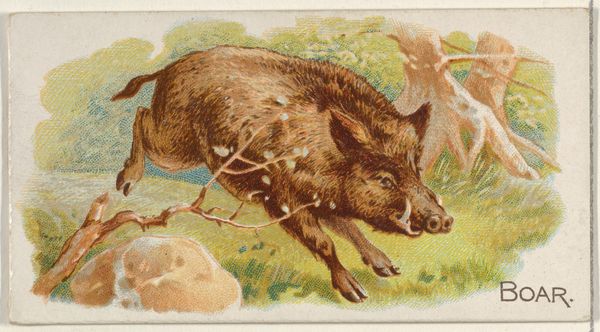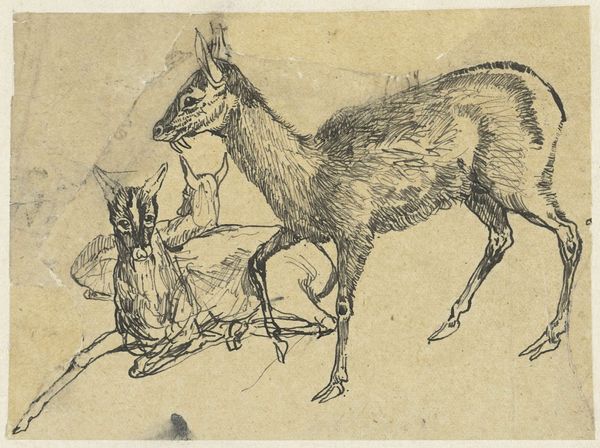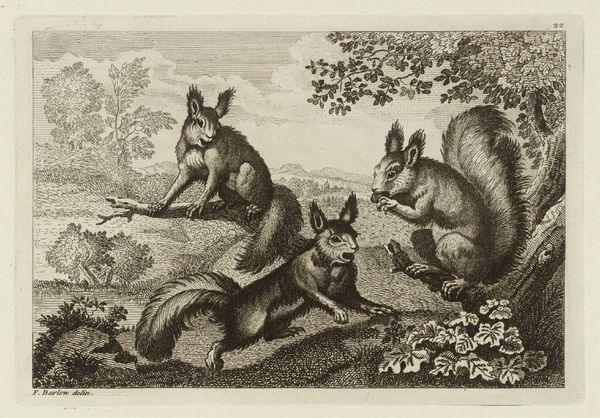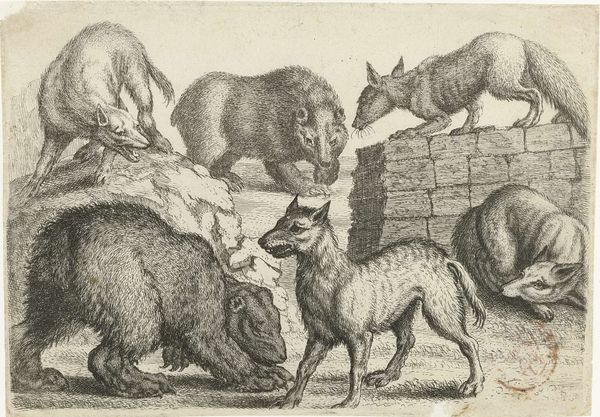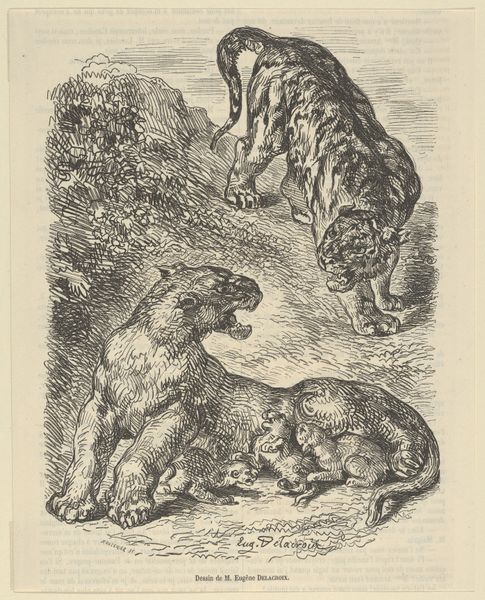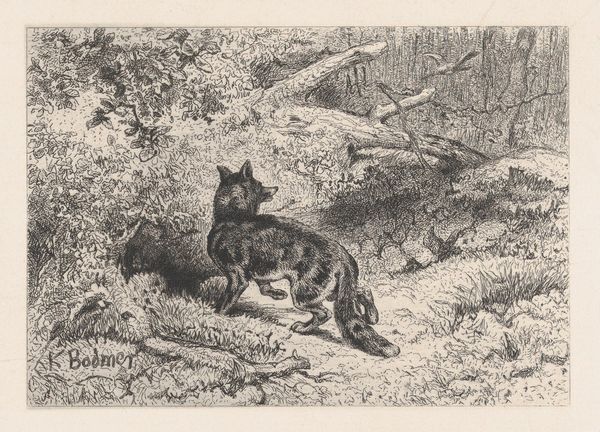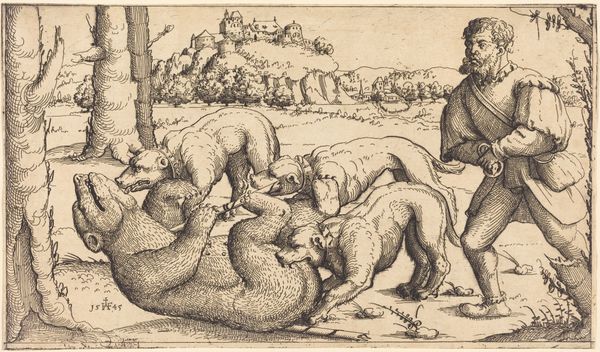
drawing, ink
#
drawing
#
animal
#
landscape
#
ink
Dimensions: 77 mm (height) x 126 mm (width) (bladmaal)
Editor: Here we have Johan Thomas Lundbye’s "Ræven," or "The Raven," from 1843, rendered in ink. I’m struck by how realistically Lundbye depicts the foxes in a natural landscape. It's so simple, but there's an incredible sense of movement and life in what is essentially a drawing. What captures your attention about this piece? Curator: The image itself appears innocuous, a family of foxes rendered realistically, but its production in 1843 is fascinating. The "Golden Age" of Danish painting was in full swing, where national romanticism and idealized landscapes reigned. How does a seemingly simple animal study fit into this broader socio-political context? Editor: That's a great point. I hadn't considered the historical moment. So, is the image possibly more pointed than it initially seems? Curator: Exactly! Think about it: Lundbye wasn't creating heroic depictions of battles or idealized countryside scenes that bolstered national identity, which were the order of the day. Instead, he's observing the natural world closely, drawing attention to wildlife—common animals and thus relatable. One might argue this close, even intimate, look at nature served as a more subtle commentary on Danish identity rooted in everyday life rather than grandiose mythologies. Editor: That’s a perspective I hadn’t considered, a very personal one compared to history painting of the time. Now that you mention that socio-political framing, this simple drawing gains a whole new depth. It encourages me to reflect on how social values dictate artistic visibility. Curator: Precisely. And what looks “natural” is always culturally determined. These foxes weren’t just frolicking in the fields – their very depiction speaks to larger conversations about belonging and identity in 19th-century Denmark.
Comments
No comments
Be the first to comment and join the conversation on the ultimate creative platform.

